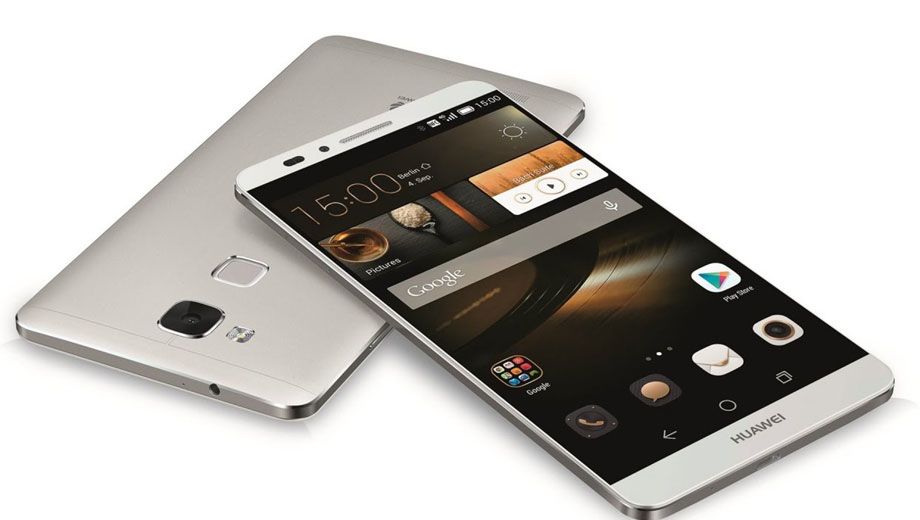Huawei’s Mate 8 'phablet' is the Chinese carrier’s flagship smartphone, and it packs in some handy features for business travellers.
Featuring an aluminium unibody design, the Mate 8 is a premium phone that feels rock solid in the hand. The sharp design is complemented by extremely thin bezels on the side, so that you get more screen space for less actual space.
The result of this is that compared to competitors like the Nexus 6P (made by Huawei also) and the iPhone 6S Plus, you get a larger screen in a smaller package.
The Mate 8 features a 6-inch screen, compared to the Nexus 6P’s 5.7-inch screen and the iPhone’s 5.5-inch screen. However where it falls short is resolution – offering up just 1080 x 1920 pixels, it’s not bad, but also not exactly impressive in this price range and amongst its competitors.
The decision to offer an adequate display, rather than a battery-sucking high end display, is something that’s actually handy for business travellers – thanks to this decision and the huge 4000mah battery, the Huawei Mate 8 features fantastic battery life.
According to Huawei, heavy users will get close to a day and a half of usage from a full charge, and regular users should get upwards of 2 days battery life.
In our own tests, we were able to get around 24 hours of usage out of the phone after a full day and evening of web browsing, video playback and emailing.
The Mate 8 also packs in fast charging tech, which means that you can fully charge the battery in 2.5 hours and get enough juice give you around 8 hours of charge from just 30 minutes of fast charging.
Another handy feature for travellers is the combination DualSim/MicroSD card slot, which is separate to the main SIM slot.
While the dual-sim slot can only be used for 2G, we found it handy for times when you need to make local calls but still want to receive calls from your home country without carrying two phones.
The expandable storage option is also convenient for those that don’t find the 32GB of storage adequate.
The Mate 8 features a fingerprint reader just below the camera on the back of the phone - this is one of the best implementations of this feature that we've seen on a phone, as it's completely natural to unlock quickly, and it has a very high level of accuracy.
The Sony-manufactured camera on the Mate 8 is average in performance – fine for quick snaps, but not really impressive in its quality, and there’s certainly no 4k video recording like you see on other competitors.
When it comes to performance, the Mate 8 packs some impressive specs – 2.3GHz of processing power and 4GB of RAM give it zippy speeds.
The Mate 8 runs Android 6.0 Marshmallow, and like most Chinese manufactured phones it comes with its own flavour of Android in the form of Huawei’s EmotionUI.
While there are some interesting features like motion control and knuckle control for certain functions, we would have preferred to see more of the stock Android UI that we’re used to.
The Huawei Mate 8 is a great choice for business travellers, but only if you’re in the market for a 6-inch phablet.
While it features great performance and battery life, its let down by the average screen quality and camera offering, and at its price point of $899 in Australia there are other better value options that we would prefer to have when hitting the road.
Follow Australian Business Traveller on Twitter: we're @AusBT





19 Sep 2015
Total posts 21
It's insane what phones can do now. My laptop achieves 2.3GHz and has 4GB of RAM!
Qantas - Qantas Frequent Flyer
02 Jul 2011
Total posts 1374
With the 2G shutoff fast approaching in Australia (and I suspect offshore as well)... looking for something that can do 4G/3G
The latest set of Snapdragon 820 phones can do this (Xiaomi Mi5, LeTV Le Max Pro), and reportedly the new Moto G4 (although only a Snapdragon 617 chip)
Qantas - Qantas Frequent Flyer
14 Dec 2015
Total posts 9
'...offering up just 1080 x 1920 pixels...' since when is full HD resolution falling short?!
Hi Guest, join in the discussion on Hands on: Huawei Mate 8